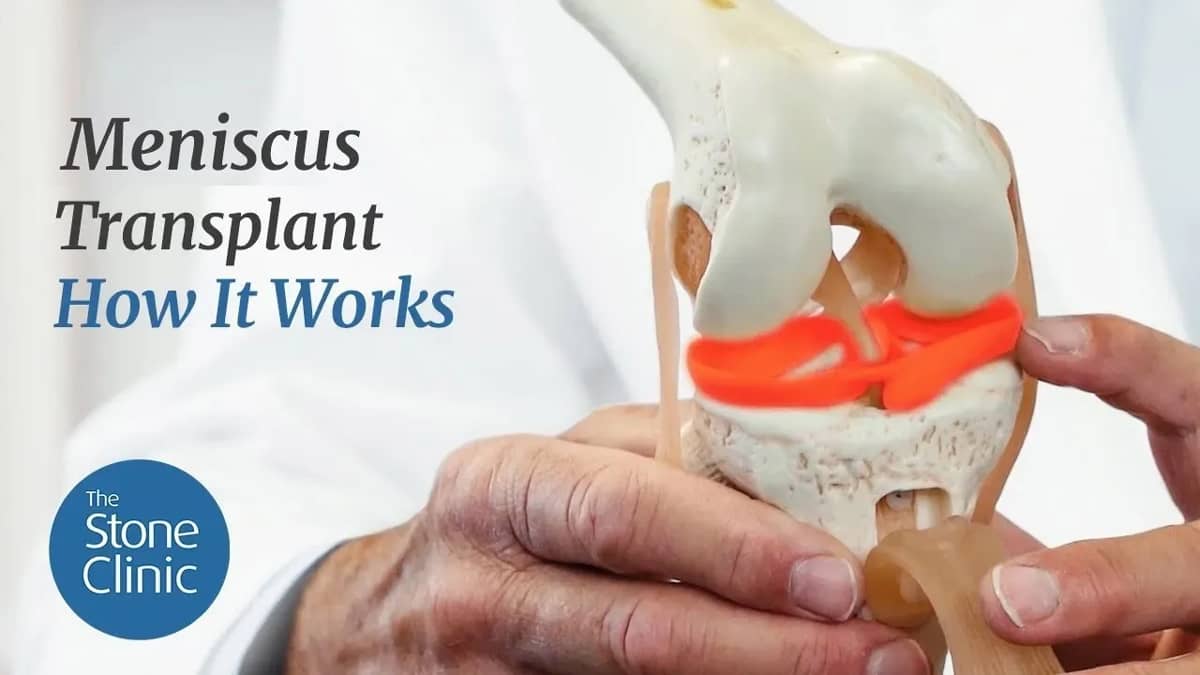Lessons Learned From Our First 500 Meniscus Transplants
Hear From Our Patients
Skier avoids knee replacement with BioKneeThe meniscus is the key shock absorber in the knee. When it is lost, the knee degrades. Our bias has been to replace the meniscus as soon as possible after significant loss of tissue occurs.

Anatomically speaking, the meniscus consists of two fibrous tissues sitting between the femur (thigh bone) and the tibia (shin bone) in the knee joint. These crescent-shaped bands of cartilage—the medial (on the inside of the knee) and lateral (on the outside of the knee) menisci— are connected by a transverse ligament. They are attached to the tibia primarily by thin ligaments, with additional attachments to the capsule of the knee joint and the femur. The menisci rotate under the femur when the knee bends, and cushion the bearing surface. They provide protection, force distribution, and stability to the knee.
When injured in sports or by twisting, the meniscus loses its function. The femur rubs on the tibia, the articular cartilage cover wears off, and arthritis develops.
Our bias is that it is much better to replace the meniscus before the degeneration occurs. But even after arthritis sets in, a new meniscus can act as a pain reliever. Therefore, we replace the meniscus whenever its function is lost. Here are some highlights from our first 500 meniscus transplants, performed over the last 30 years.
- Donor meniscus (often from young, healthy people who die falling off their motorcycles) that is fresh frozen, and not irradiated, works the best.
- The meniscus can be sized based on the donor and recipient's height, with the donor being the same height or one to two inches taller.
- Meniscus replacement in children should occur the moment the tissue is lost, as their knees degrade faster than those of adults.
- Bilateral meniscus replacement (medial and lateral combined) can be successfully performed, preferably with tissue from the same donor.
- Healing for patients with donated meniscus tissue is much faster than previously believed. It is usually completed in 3 months, with a full return to sports in six months.
- Partial weight bearing immediately after meniscus replacement helps to seat the meniscus and preserve muscle strength.
- The surgery needs to include careful stitching of the donor meniscus to the remnant tissue and reproduction of the natural bony attachments.
- Arthritis is not a contraindication for meniscus replacement as long as the rough arthritic surfaces are treated with cartilage restoration procedures such as articular cartilage paste grafting.
- Meniscus transplantation in arthritic patients over 50 years of age delays the requirement for artificial joint replacement on average by 9 years. Fifty percent of our patients in a 2-20 year follow-up study never came to arthroplasty.
- Angulation of the knee under seven degrees is considered acceptable and often normal, and no bony alignment procedures (often called osteotomy) are required.
- It is unknown whether or not meniscus replacements will last a full lifetime. The MRI follow-up of many meniscus transplants after five years does not appear to be normal, even though the patient may feel normal—and many studies show a reoperation rate of up to 30% for various reasons, including re-tears and scar tissue formation.
- Many meniscus transplants stretch out at the mid-body of the meniscus. This means that on an MRI, the middle of the meniscus appears to be protruding off the tibial plateau. This has not affected the success rate, though it does not seem to be ideal. Surgical attempts to anchor the meniscus more firmly at the mid-body lead to loss of normal meniscus rotation, and possibly to a higher re-tear rate.
- The MRI appearance of meniscus transplants does not directly correlate with clinical success.
- Most meniscus transplants should have been performed much sooner than they were.
- Meniscus transplants can be repaired or repeated multiple times as the person ages or reinjures the knee.
The primary lesson we have learned is that a healthy meniscus is the key to a strong knee. Removing it dooms the knee. Repair the meniscus when torn, if possible, and replace it as soon as it is irreparably damaged or removed.



